Ball Python egg incubation requires carefull attention to temperature and humidity. Both must be stable, and at optimum levels throughout. For the best chance of success, choose and prepare your incubator long before the eggs are due. After putting them in, it’s just a waiting game until they hatch.
I’ve been incubating Ball Python and other snake eggs since I was 12 years old, and most of the time it is really easy, so long as you follow the guidelines I’m giving you here. In this article, I’ll explain how to choose an incubator and get your egg box ready, as well as what temperature and humidity levels to aim for.
How do you incubate Ball Python eggs?
Incubating eggs is a recipe – and you must get each ingredient right if you want to achieve a good hatch rate. In my experience, the main ingredients are temperature, humidity, and stability. If any of these aspects is incorrect, it can lead to embryo death.
That said, when you maintain these elements within the correct parameters, incubating Ball Python eggs is a breeze! You can literally open the egg box once a week to check on them, and mother nature does the rest.
In this article we’re going to look at how to get this recipe right and set you up for success.
Ball Python incubators
I’m going to take you through each aspect of incubation, but first – you need to get a good, reliable incubator. This will ensure the stability aspect by maintaining constant temperatures.
I’ve been hatching python, colubrid and turtle eggs since I was 12 years old. The main lesson I’ve learnt is that your incubator needs to be stable and safe.
If expecting eggs, get an incubator and test it well in advance. Unfortunately, most professional models are temperamental and fluctuate too much for my liking. Don’t just buy an incubator and expect it to work!
DIY incubators can be a better option, as you have complete control over how to build and modify them. If you are considering building your own, then I suggest reading another article in this topic that I’ve linked at the end: DIY Ball Python Incubator. It tells you how to make your own in ten steps, as well as how to prepare your egg boxes.
Whether you choose a professional model or homemade, make sure you test it for at least 48 hours, several weeks before a clutch is expected. This gives you time to make any alterations.
Before your clutch arrives the temperature in your incubator should have been stable for days. Ideally, it shouldn’t fluctuate by more than 0.5°f/0.3°c over a 48hr period.
*WARNING: some newer models of fridge and wine cooler have something called “gas-blown insulation”. This can be toxic to reptiles and their eggs! If you think something has this in it – or you aren’t sure – do not use it for a DIY incubator. In general there is usually a sticking stating what the “blowing agent” was if this insulation is present.
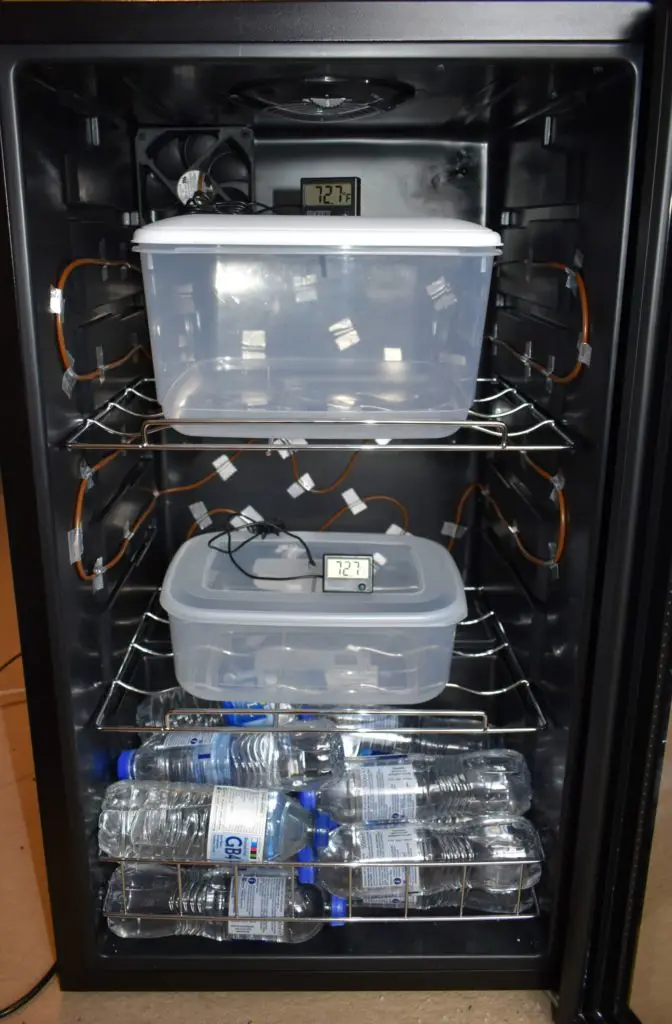
Ball Python Incubator types: pros and cons
| Incubator type | Pros | Cons |
| Freezer box (polystyrene) | – no fan needed – cheap | – not see-through – can usually only fit one clutch |
| Drinks cooler (plasic) | – no fan needed – cheap | – not see-through – can have harmful anti-mould coating on inside surfaces |
| Professionally made product | – ready to use – safe | – expensive – quality varies: even for expensive models! |
| Fridge or wine cooler | – some have glass doors you can see through – adaptable and can fit many clutches | – at least one fan is necessary – it is up to you to make sure it is safe! |
Ball Python incubation temperature
According to every major breeder I’ve spoken to, the optimum temperature range for ball python eggs is 88-92°f (31-33°c).
Notwithstanding, it is true that eggs have hatched at temperatures several degrees cooler or hotter, but this isn’t something I would recommend.
If incubating at less than 87-88°f (30.5-31.1°c), your eggs will take longer to hatch. This isn’t harmful in of itself – but don’t forget, more time incubating means more opportunity for something to go wrong. Why drag it out?
Imagine you incubate at 80°f (26.6°c) and they take ten days longer to hatch, in those last ten days you have a 24hr power cut. Major problem! It sounds crazy, but I’ve known people who have had this happen and it does affect the developing babies.
Incubating at high temperatures, so above 92°f (33.3°C), also has drawbacks. First being that excessive heat will simply kill the embryos and wipe out your clutch. Second is that it’s never a good idea to rush things with Ball Pythons.
Other breeders who have been open enough to discuss it have told me that they find babies incubated at higher temperatures are less eager to feed and harder to get established. Again, it’s a case of ‘why risk it?’
I always incubate Ball Python eggs at 89.2-89.6°f (31.8-32°c) and have a hatch rate close to 100% – this is the bottom line for me.
Successful temperatures:
- low: 87-88°f (30.5-31.1°c)
- high: 92°f (33.3°C)
- just right: 89.2-89.6°f (31.8-32°c)
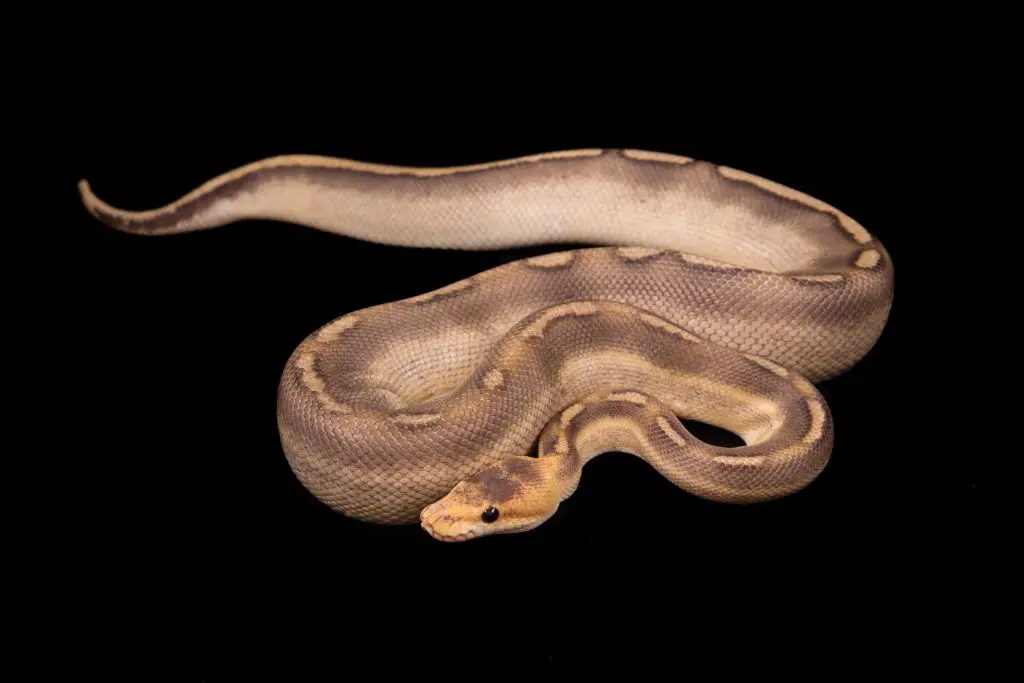
Humidity
This is a simple one: the humidity needs to be as high as possible without the incubation medium being wet. This equates to 95-99%.
To help monitor things, I usually place an analogue humidity gauge in the egg box. These are notoriously inaccurate but if the reading says “high” then it’s usually a good sign. Also, they will notify you of a drop in humidity, and this can act as a warning that water needs adding.
Realistically, the most effective way of keeping humidity high is to choose airtight egg boxes. Personally, I like to use plastic tubs that seal firmly, or even clip closed. These will maintain humidity easily so long as the incubation medium was prepared properly (see the next section).
As well as choosing an airtight egg box, try to pick one with a convex lid. This will prevent water condensation from dripping onto your eggs, which can harm them. Remember – they love humidity, but hate being wet!
Now I know what you’re thinking – don’t they need air?
The answer is yes, but not much. It is a good idea to open the egg box once a week, just for 20-30 seconds, to let fresh air in. This has very little effect on the stability of temperatures if done quickly and won’t be enough to let them dry out.
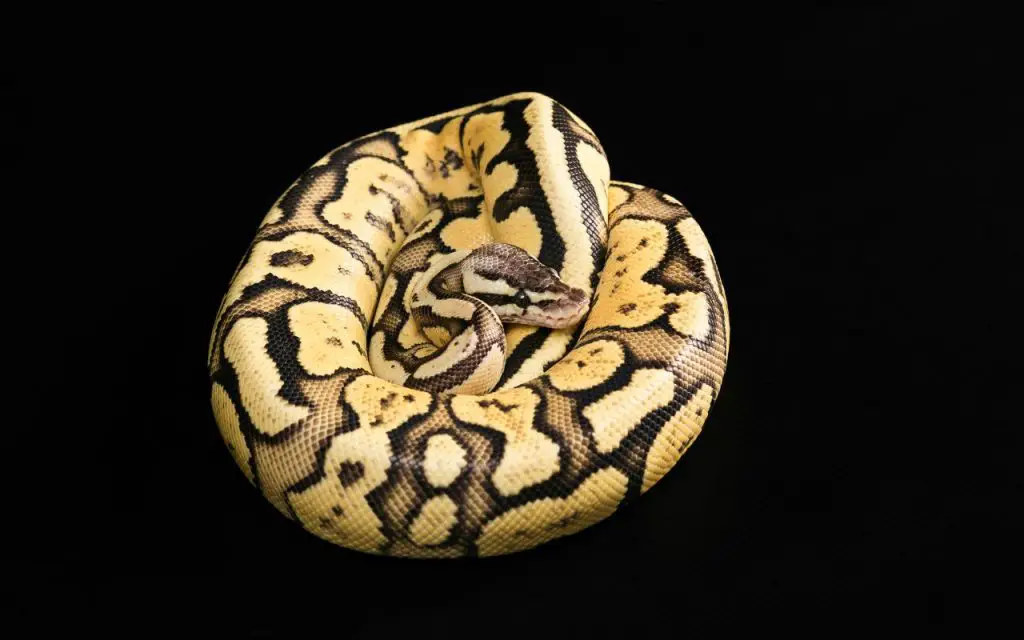
Incubation medium
The most popular incubation mediums for Ball Python eggs are vermiculite, perlite, or a mix of the two. Both mediums can be prepared by mixing them with an equal weight of water. For example, 100 grams of vermiculite to 100 grams of water creates the perfect humidity for incubation. It really is that simple!
Personally, I don’t like to plug products, but I only generally use Hatchrite. This is pre-mixed perlite with the correct water content. It’s also mould resistant. In my experience, it does achieve a high hatch rate.
Of course, the downside is it’s more expensive, but if you only do a couple of clutches a year like me it’s well worth it.
“Substrate-less” incubation

This method has gained a lot of popularity with hobbyists in recent years because it allows you to easily maintain high humidity.
Basically, you place the eggs onto a layer of egg crate, which is a type of plastic framework available in most aquatic shops.
Under the egg crate a shallow layer of incubation medium (or even none at all) is placed and water is filled into the top of it.
As the eggs are on top of the egg crate, they never touch the water, and remain safe. The water presence however does increase overall humidity and makes desiccation (drying out) much less likely.
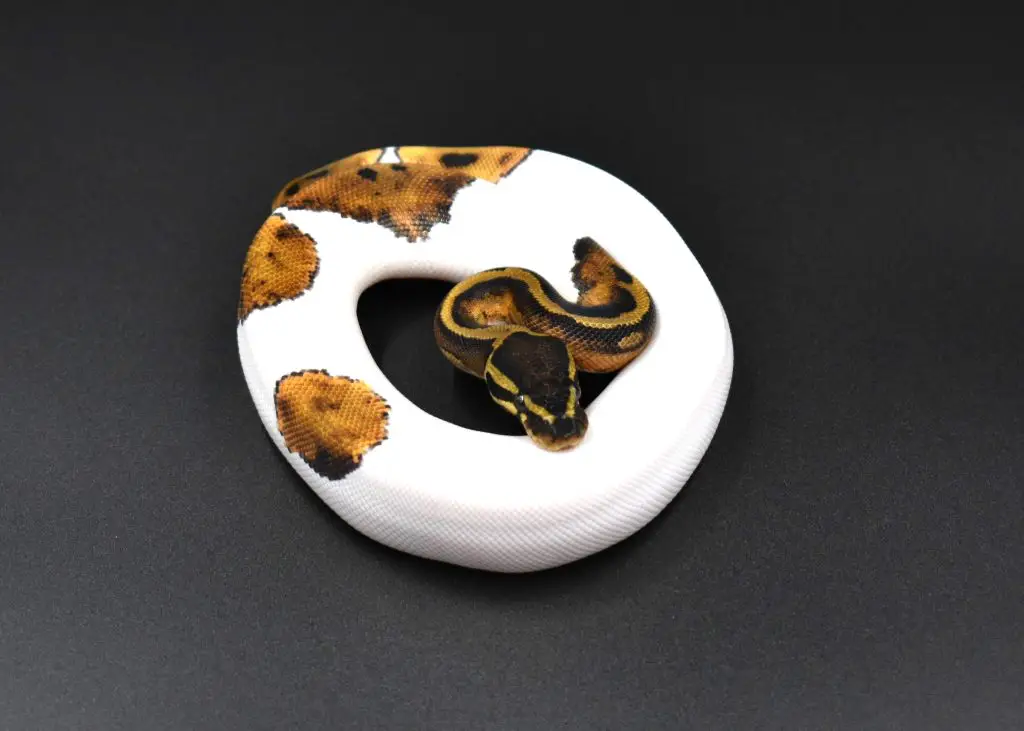
How to set up Ball Python eggs
There are a lot of different ideas and methods on this one. Some people candle them with a flashlight to check they’re alive, mark the top with a marker, weigh them etc.
I don’t do any of this. After all, embryos develop at different rates. And the only egg that is not worth incubating is a slug (infertile egg). These are easy to spot because they’re smaller, waxy, and generally dead looking from the get-go. If an egg looks healthy – strong veins or not – I incubate it.
In my opinion, all these steps equal more time exposed to sub-optimum temperature at the most vulnerable point in the incubation period. I just take them out of the female’s enclosure and quickly set them up in an egg box.
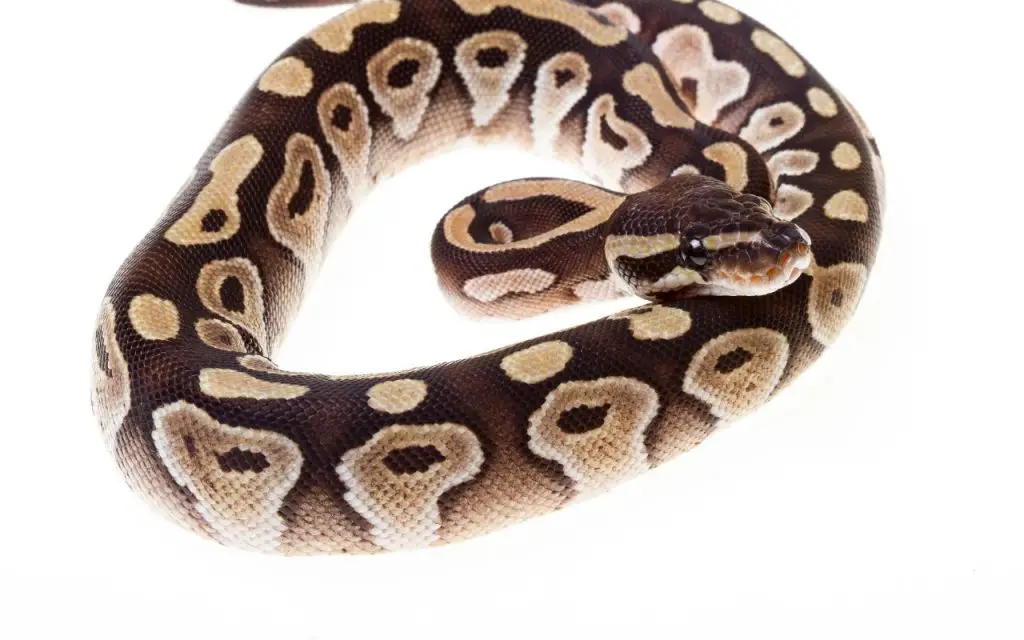
How I set up eggs at Ball Python Breeder UK
For me, eggs are designed to hatch, it’s what they do. And it’s what they’ve done for millions of years. All they want is the correct temperature and humidity and stable conditions.
To this end, I keep things as simple as possible!
I pull the eggs and immediately put them into a large, airtight egg box with at least 3in (7 or 8cm) of Hatchrite, and a depression scooped into the middle of it.
Once the eggs are placed in this dugout, I bury theirs sides a little. This method reduces the surface area of the eggs as much as possible – allowing them to retain moisture effectively throughout incubation.
No candling, marking, or anything else is needed – and they hatch!
Is my female Ball Python gravid?
Your Ball Python will lay eggs between thirty and fifty days after ovulation. Generally speaking, she will ovulate, go through a shed cycle and then gradually get fatter until the big day. Always record the date on which a female sheds her skin – counting from that point onwards is the best way to predict when she will lay.
A little trick I use if I think I missed an ovulation is to put a possibly gravid female on the floor and stand back. It’s not 100% accurate, but most of the time gravid females will stay in one spot, rather than try to crawl away.
Why do Snake eggs stick together? Volume to surface area ratio and incubation
Another thing I never do is separate eggs. Eggs stick together for a couple of reasons, but mainly to increase their volume to surface area ratio.
Think about it – why are eggs from big reptiles perfectly round? Because it is the optimum shape for maximising volume to surface area ratio. The only reason Ball Python eggs aren’t spherical is because they are a small-ish species with big babies. This necessitates an ovoid shape to fit within the rib cage.
Having a high volume to surface area ratio minimises the surface area that heat and water can escape from.
Ball python eggs stick together because this reduces their surface area even more. Pulling eggs apart increases their exposed surface area, making them more vulnerable to desiccation – exactly the opposite of what we want during incubation!
That said, I fully understand why people separate eggs. It stops them from being able to roll when moving the egg box and allows you to easily remove one if it goes mouldy. The truth, however, is that a healthy egg usually won’t just go mouldy because its neighbour does. If a mouldy egg worries you though you can still remove it later in the incubation process.
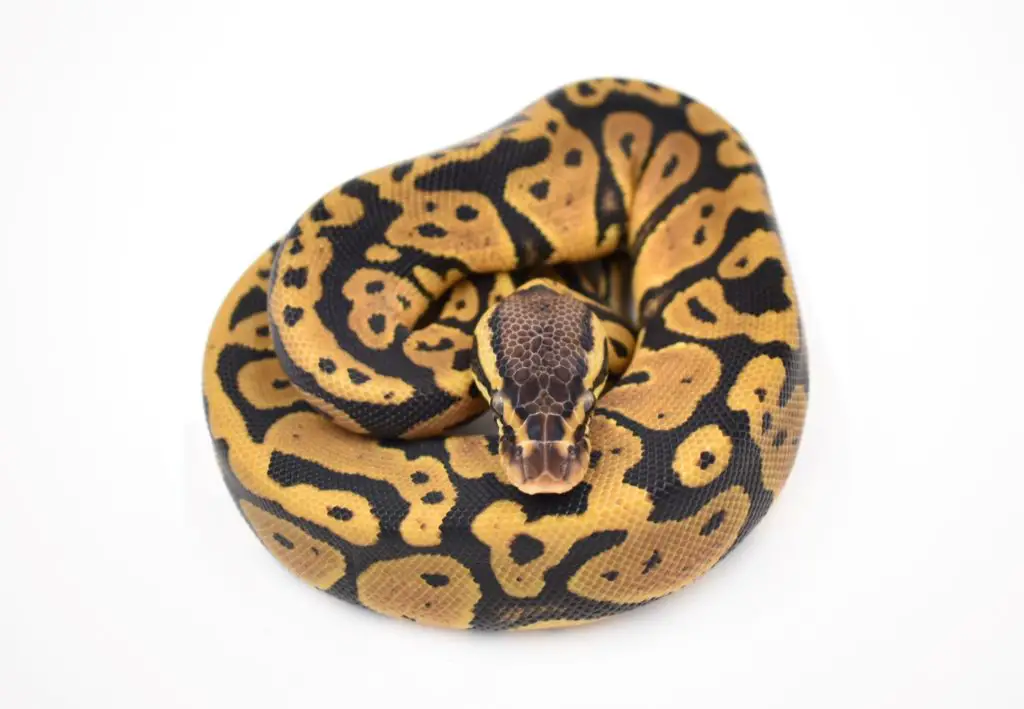
Ball Python eggs collapsing
Are your eggs collapsing after a month incubating? Well, don’t worry! This occurs because the volume of yolk decreases when the embryos gain size and absorb it.
From 28-35 days onwards you may see one or two eggs dimple, then from day 40-45 onwards you will generally see all of them start to collapse.
It looks alarming – seeing your eggs deflate – but if it’s occurring after the halfway point, it is perfectly normal.
If it occurs during the first two or three weeks of incubation, however, this is often a sign of desiccation. Add a couple of tablespoons of water to the substrate and pop in a humidity gauge if you don’t have one in the egg box already.
How long do Ball Python eggs take to hatch?
At an incubation temperature of 88-92°f (31-33°c), most babies will pip (stick their head out) after 55 to 60 days of incubation.
Looks look at an example… The ten-egg clutch in the photo below was incubated at 89.2°f (31.8°c). For incubation medium, Hatchrite was used. The first baby pipped on day 57, and the last one on day 60.
This is typical, but it would be perfectly normal for a clutch to pip a few days earlier if it incubated at a higher temperature, or a few days later if incubated at a lower temperature.
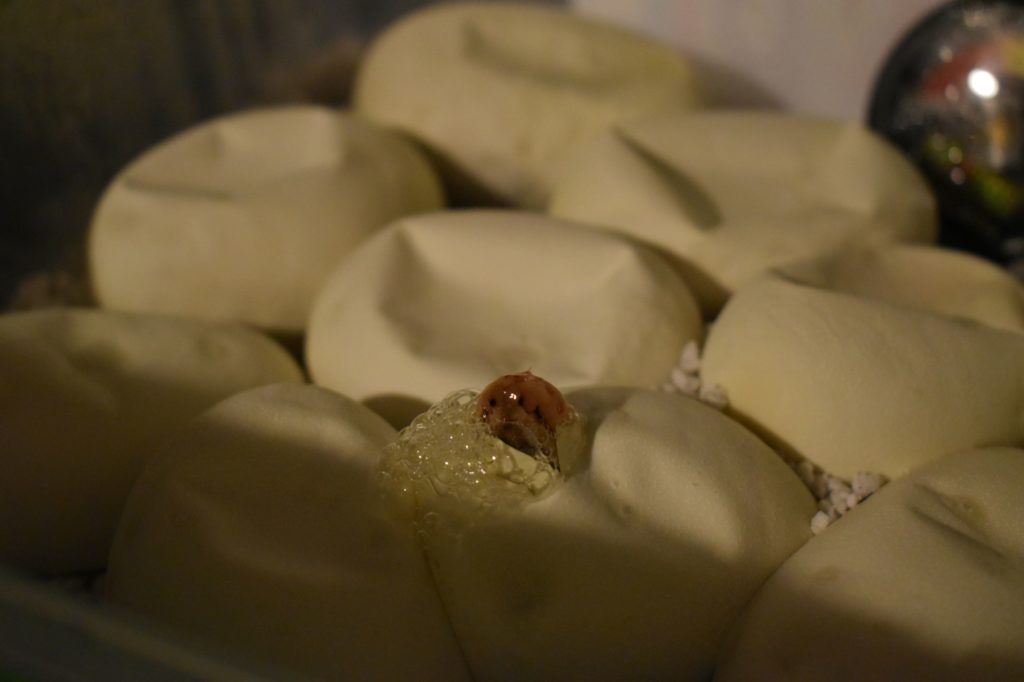
Ball Python egg cutting
Ball Python egg cutting is the practice of cutting open eggs to help the hatchlings exit safely, usually after the first one has pipped on its own.
Most people cut eggs these days, but amongst those who don’t are myself and the great Markus Jayne – someone who’s example I’m happy to follow.
Two major reasons for cutting eggs are fear that a baby snake may be missing an egg tooth, or that it may be strangled by its umbilicus.
Personally, I find both these ideas a little strange, especially as the umbilicus drops of when the yolk is depleted, and the baby is ready to hatch. In fact, the only time you’re likely to see an umbilicus attached or strangling a baby is when you’ve cut open an egg and exposed the baby to the outside world days before it was truly ready.
Nonetheless, it is possible there are cases where there is an anomaly or defect, and a baby does get wrapped in the umbilicus. But this could happen as soon as the baby is big enough to fill most of the egg.
What are we going to do, cut the eggs at day 40 forty and risk killing them all? I think we must choose a level of risk we’re comfortable with and accept that we can’t prevent every single problem. If we try to, it may in fact do more harm than good.
That said, this is not a criticism of people who cut eggs in any way, just how I see it. After all, most people who cut eggs do it for the right reasons and it would be unfair to attack them for it.

Can you leave Ball Python eggs with the mother?
Before we conclude this article, it’s important to note that you can leave Ball Python eggs with the mother. This is called maternal incubation. Most keepers do remove the eggs, so that they can be incubated in an incubator because these generally have a very stable environment.
Nonetheless, a mommy Ball Python is perfectly capable of looking after her eggs. If you have an enclosure that maintains VERY stable temperatures and humidity, then you can let your female incubate her eggs.
How soon after hatching do ball pythons eat?
Incubation can be tricky, but if you get your eggs to hatch you’ll soon have half a dozen baby Ball Pythons on your hands. In general, hatchling Ball Pythons eat around 7 to 10 days after hatching. By this time, they have had their first shed, and used all their yolk.
Before this point, I recommend leaving them to settle in – just like you would any new pet reptile. Try not to handle them too much, or offer food too soon.
Conclusion
Incubating eggs is simple – don’t overthink it or overcomplicate it. Just get the recipe right and test your incubator well in advance.
Whatever incubation medium or method you use, make sure you choose that well in advance too – don’t change anything during the process.
When it comes to heat, Ball Python eggs can hatch at a variety of temperatures, but stability is the key to good hatch rates. To this end, keep an eye on your incubator every hour or so during the whole 48-hour testing period. I know it sounds like a pain, but it’s worth it.
Whether you cut the eggs is up to you, though personally I don’t recommend it. It’s your choice – but get the incubation period correct first so that you get to make it!
FAQ related to Ball Python egg incubation:
This is a big topic – so I thought I’d try to answer a few FAQs while we’re here. Don’t hesitate to get in touch if I’ve missed anything though!
Can you incubate ball python eggs at 85 degrees?
You can indeed incubate the eggs at 85 degrees. The only thing that will change is that they will take longer to hatch than if you incubated them at my preferred temperature of 89F. This could be a difference of anywhere from a few days, to over a week.
Can I let my ball python incubation her own eggs?
You can let your Ball Python incubation her own eggs if you are happy that the enclosure is warm enough and humid enough. This is called maternal incubation, and has a high success rate. You just need to carefully monitor the enclosure and choose a substrate that holds humidity well.
Can you incubate ball python eggs at 91 degrees?
You can incubate Ball Python eggs at 91 degrees, and it will result in a faster incubation time. It could for example, shave 3 or 4 days off in total. That said, temperatures over 92F are often associated with defects and other issues. Unless your incubator is extremely stable, it might be safer to stick to a temperature of 89F.
How early is too early to cut ball python eggs?
Personally, I don’t cut eggs. If I did, though, I would consider before day 55 too early to cut. This is a subject of debate and everyone’s opinion is different. At day 55, you could be reasonably confident that they were at or nearly at full development.
Also on this topic:
- DIY Ball Python Incubator
- How many eggs do Ball Pythons lay?
- Do female Ball Pythons lay eggs without a male?
For more on Ball Python eggs:
Back to the Ball Python eggs and incubation page

I have a female that just laid 9 eggs and this is my first clutch ever. I put them in my reptibator in a plastic tub with a slightly higher ratio of 1:1 vermiculite. All The eggs started to simple slightly so I’m worried. I have a digital hygrometer on the vermiculite that is reading at 99% humidity. The thermostat for the incubator is staying at a consistent temp of 89.8 degrees. The hygrometer for the incubator is reading at 74 % relative humidity and doesn’t vary much. The eggs haven’t deflated anymore and this is day # 2
Hi Eriq, thanks for getting in touch. Could you get me some photos of the egg tub to Pythonbreeder@mail.com? Day 2 is way too early to start dimpling. Also, 74% ambient humidity is too low – we’re aiming for as high as possible. Are there any holes in the lid? Either way, you may need to put “press and seal” under it. If you get me photos and lots of detail we’ll try to make some changes and help your eggs plump up again.
Thanks, Will
Hello,
I have a quick question. I have a DIY incubator that held its temp very nicely. I had them at 90°. Unfortunately, every last one of them turned to the consistency of a boiled egg….. does this mean the temp was too high? After looking at my incubator, I’m thinking the issue was the heat tape being on the bottom, vice the side wall. Does this sound right? I had bottled water between the egg box and heat tape.
Hi David, where was the temperature measured? Was the thermometer probe inside the egg box, or out? Also, was a humidity gauge used?
Thanks, really useful source, havent begun breeding yet but intend to build my own incubator. So it good to have a grasp on potential issues.
I noticed in the image above that one of the zoomed dial type hydrometers is used in the tub with the eggs. Personally I wouldn’t use them as they are so inaccurate. Far better to use a digital hydrometer / thermometer which has a remote probe that can be placed inside the egg box